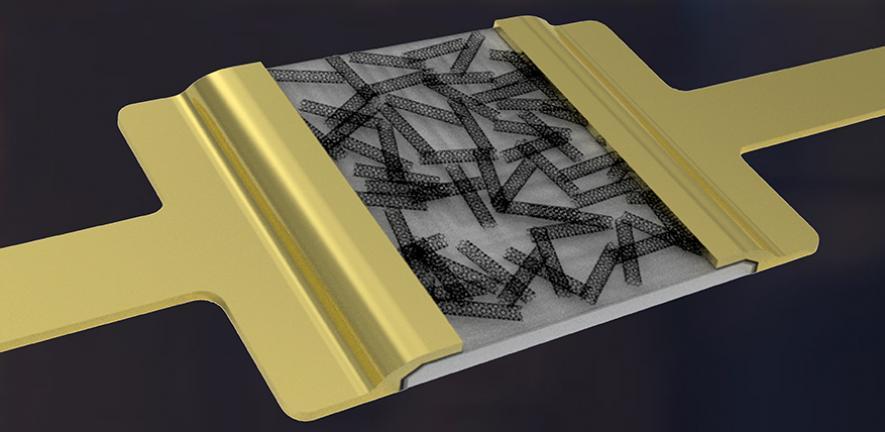
Researchers have developed a new approach to printed electronics that allows ultra-low-power electronic devices which could recharge from ambient light or radiofrequency noise. The approach paves the way for low-cost printed electronics that could be seamlessly embedded in everyday objects and environments.
Electronics that consume tiny amounts of power are key for the development of the Internet of Things, in which everyday objects are connected to the internet. Many emerging technologies, from wearables to healthcare devices to smart homes and smart cities, need cost-effective transistors and electronic circuits that can function with minimal energy use.
Printed electronics are a simple and inexpensive way to manufacture electronics that could pave the way for low-cost electronic devices on unconventional substrates – such as clothes, plastic wrap or paper. However, these devices need to operate with low energy and power consumption to be useful for real-world applications. Although printing techniques have advanced considerably, power consumption has remained a challenge.
Researchers from the University of Cambridge, working with collaborators from China and Saudi Arabia, have developed an approach for printed electronics that could be used to make low-cost devices that recharge out of thin air. Even the ambient radio signals that surround us would be enough to power them.
Thanks to deep-subthreshold ambipolar approach, we created printed electronics that meet the power and voltage requirements of real-world applications, and opened up opportunities for remote sensing and ‘place-and-forget’ devices that can operate without batteries for their entire lifetime."
Luigi Occhipinti, Lead Co-author, Department of Engineering, University of Cambridge)
The technology developed by the researchers delivers high-performance electronic circuits based on thin-film transistors which are ‘ambipolar’ as they use only one semiconducting material to transport both negative and positive electric charges in their channels, in a region of operation called ‘deep subthreshold’ – a phrase that essentially means that the transistors are operated in a region that is conventionally regarded as their ‘off’ state. The team coined the phrase ‘deep-subthreshold ambipolar’ to refer to unprecedented ultra-low operating voltages and power consumption levels.
If electronic circuits made of these devices were to be powered by a standard AA battery, the researchers say it would be possible that they could run for millions of years uninterrupted.
Click here for the University of Cambridge article.
Click here for the ACS Nano (2020) publication - "Ambipolar Deep-Subthreshold Printed-Carbon-Nanotube Transistors for Ultralow-Voltage and Ultralow-Power Electronics "
Image credit: Luis Portilla, publications first author, Soochow University,

